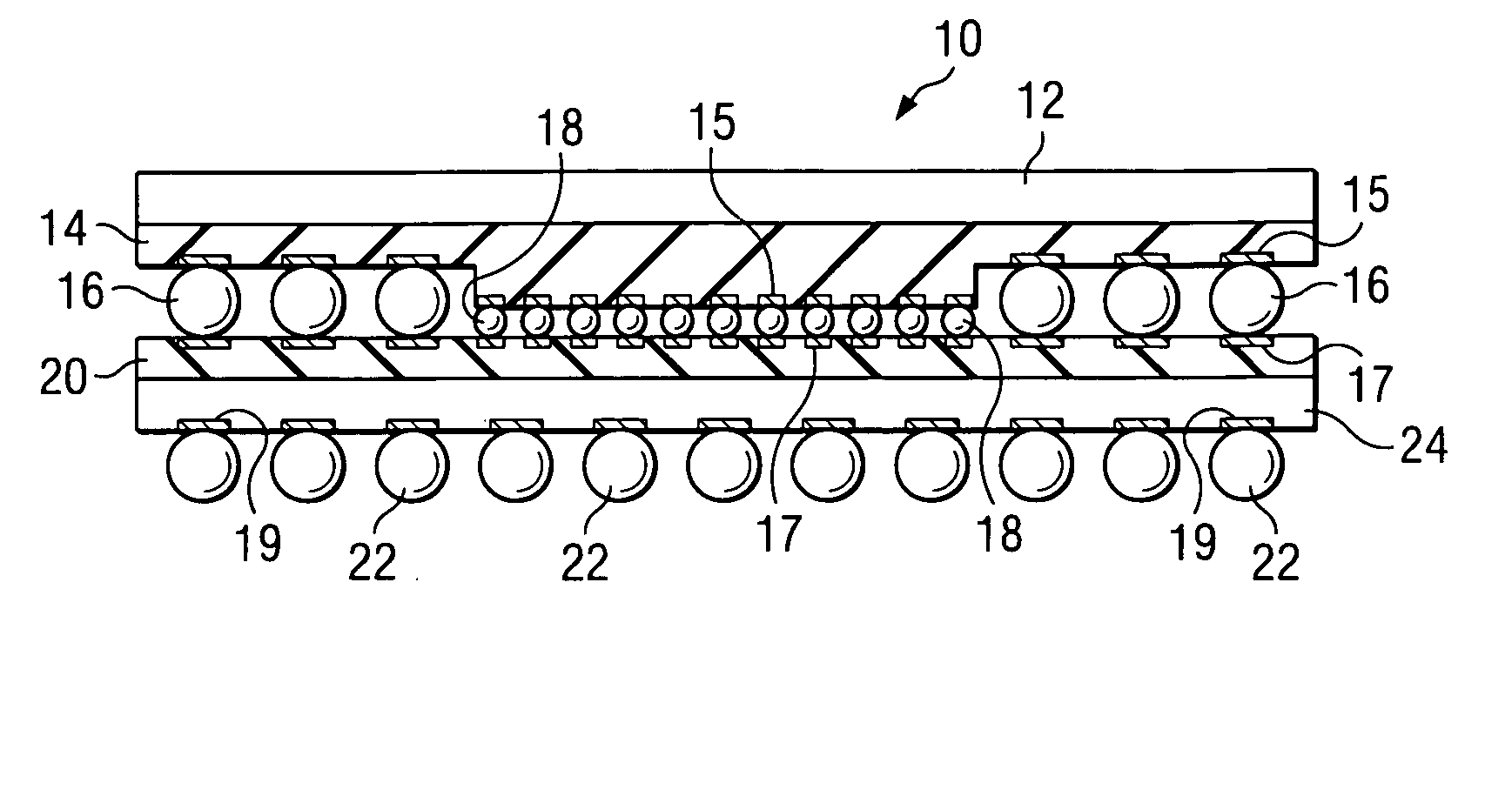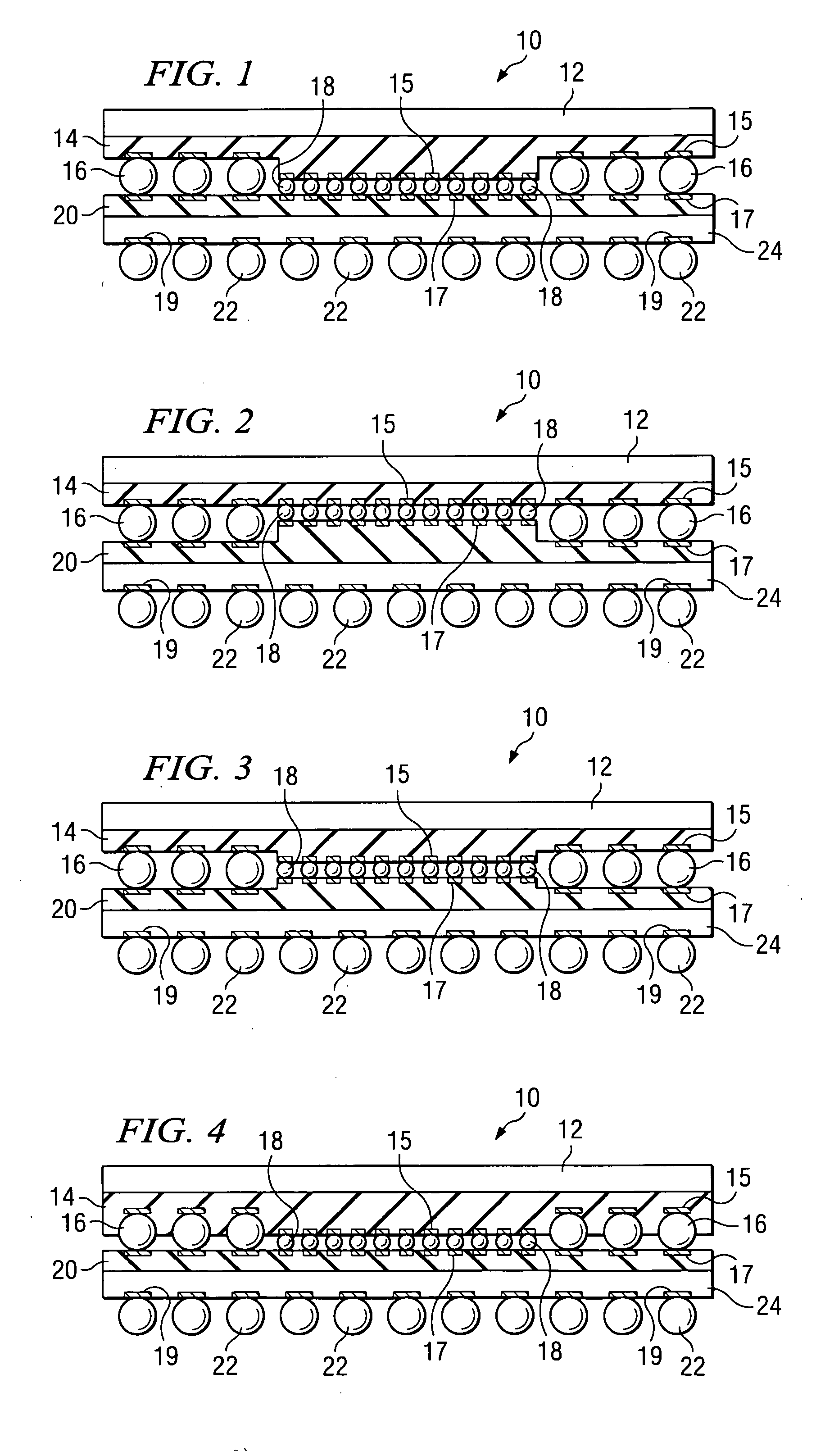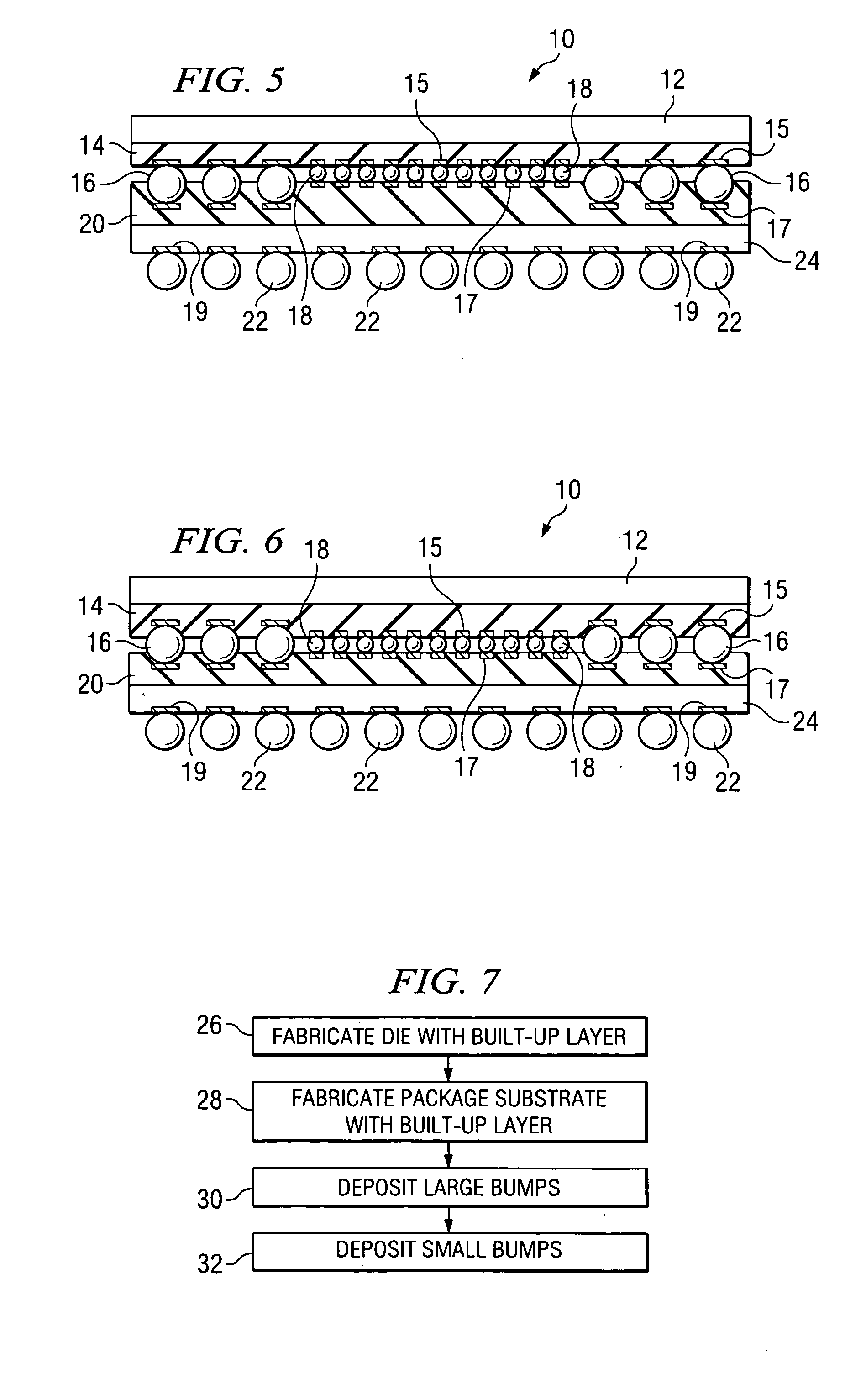Semiconductor circuit with multiple contact sizes
a technology of contact size and circuit, applied in the direction of semiconductor devices, semiconductor/solid-state device details, electrical apparatus, etc., can solve the problems of increasing the complexity of routing within the built-up layer, affecting the efficiency of the circuit, and consuming power and current normally, so as to reduce the problem of electro-migration, increase the complexity of routing, and reduce the effect of reducing the number of problems
- Summary
- Abstract
- Description
- Claims
- Application Information
AI Technical Summary
Benefits of technology
Problems solved by technology
Method used
Image
Examples
second embodiment
[0024]FIG. 2 illustrates a semiconductor circuit 10 constructed in accordance with the invention. The options discussed in connection with FIG. 1 are equally applicable to the embodiment illustrated in FIG. 2. Thus, the discussion below addresses the differences between the embodiment of FIG. 1 and FIG. 2.
[0025] In FIG. 1, built up layer 14 and die 12 had a non-uniform thickness so as to make the bottom surfaces of large bumps 16 and small bumps 18 substantially coplanar. By making large bumps 16 and small bumps 18 substantially coplanar, die 12 could be attached to package substrate 24 such that die 12 and package substrate 24 were substantially parallel after being bonded to one another.
[0026] In the embodiment of semiconductor circuit 10 illustrated in FIG. 2, however, built up layer 14 is substantially uniform in thickness while the thickness of built up layer 20 on package substrate 24 has been varied such that the top surfaces of large bumps 16 and small bumps 18 (the surface...
third embodiment
[0028]FIG. 3 illustrates a semiconductor circuit 10 constructed in accordance with the teachings of the invention. Again, all of the options discussed in connection with FIG. 1 may apply to the embodiment illustrated in FIG. 3. Thus, the discussion of FIG. 3 concentrates on the differences between the embodiment of FIG. 3 and the previously discussed embodiments of FIGS. 1 and 2.
[0029] In the embodiments of FIG. 1 and 2, either built up layer 14 or built up layer 20 had a substantially uniform thickness while the opposite built up layer 14 or 20 had a varying thickness. In this embodiment, both built up layer 14 and built up layer 20 have a varying thickness. The thickness of both built up layer 14 and built up layer 20 are varied such that die 12 and package substrate 24 are substantially coplanar with one another after they are connected together using large bumps 16 and small bumps 18. Accordingly, both built up layers 14 and 20 may be adjusted to accommodate the varying size of ...
PUM
 Login to View More
Login to View More Abstract
Description
Claims
Application Information
 Login to View More
Login to View More - R&D
- Intellectual Property
- Life Sciences
- Materials
- Tech Scout
- Unparalleled Data Quality
- Higher Quality Content
- 60% Fewer Hallucinations
Browse by: Latest US Patents, China's latest patents, Technical Efficacy Thesaurus, Application Domain, Technology Topic, Popular Technical Reports.
© 2025 PatSnap. All rights reserved.Legal|Privacy policy|Modern Slavery Act Transparency Statement|Sitemap|About US| Contact US: help@patsnap.com



